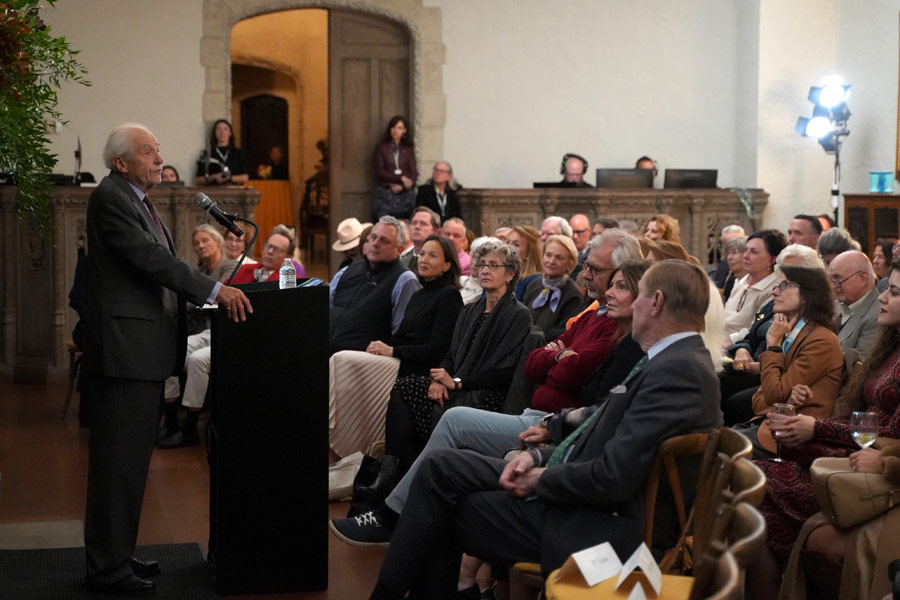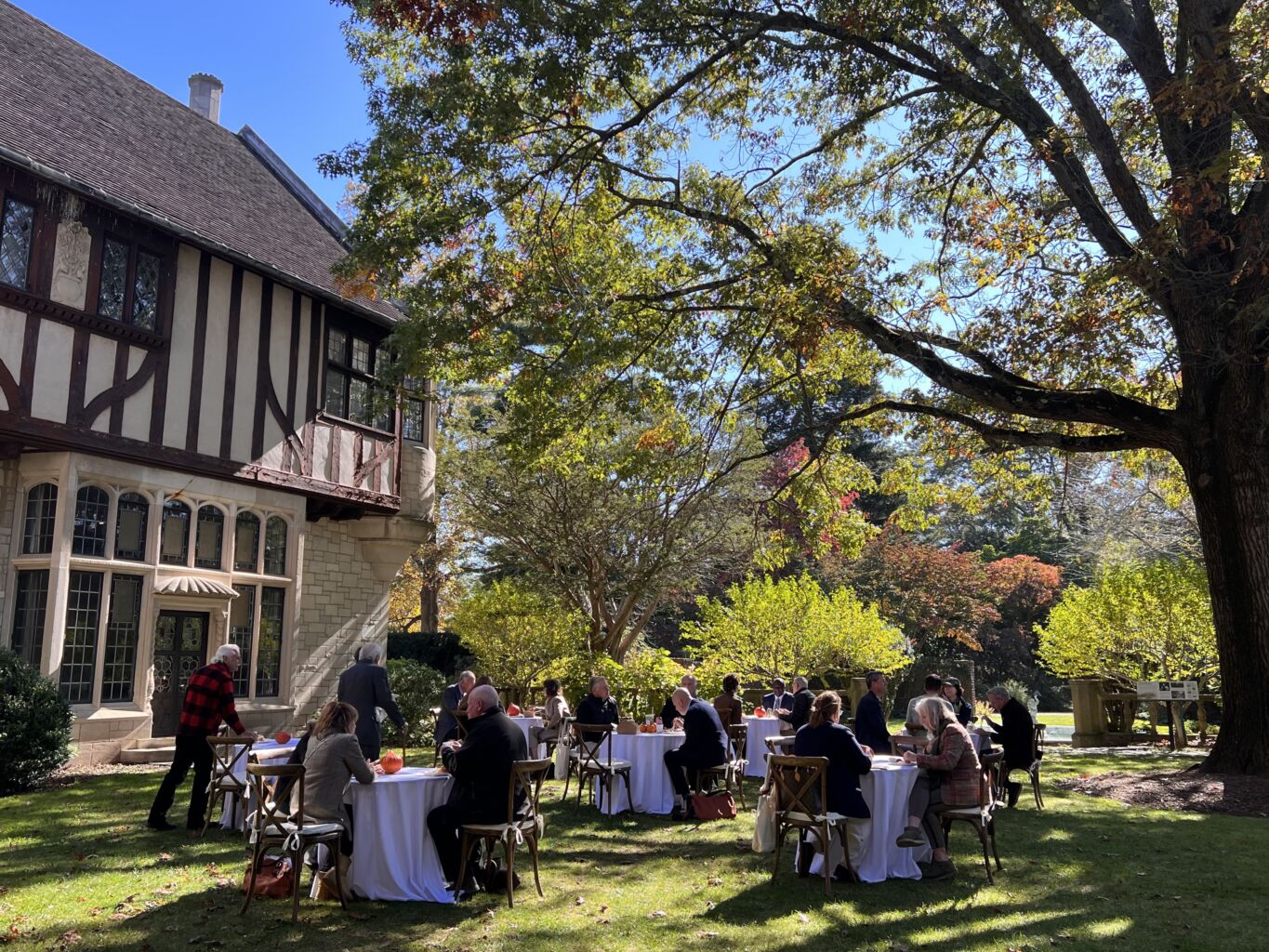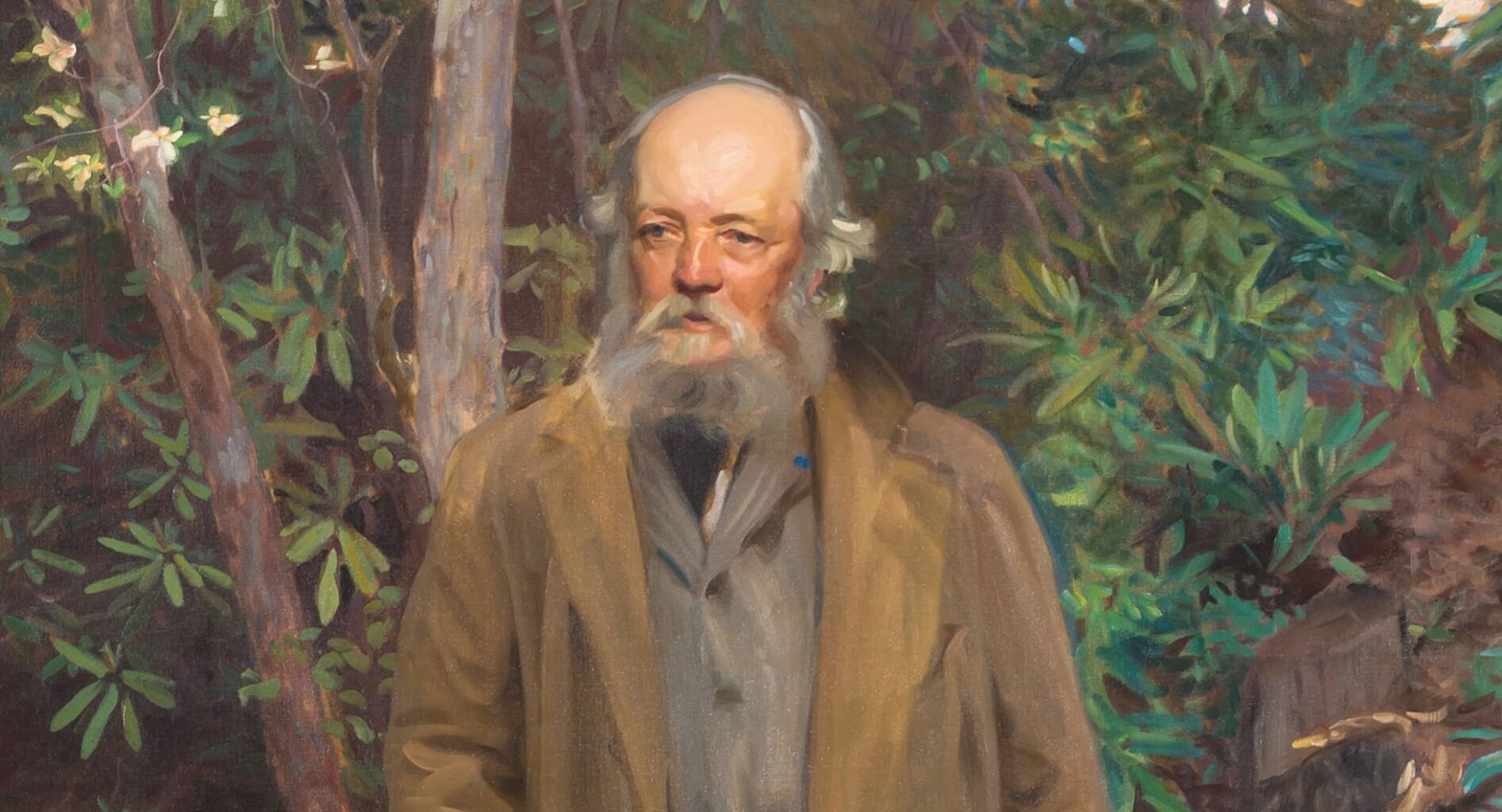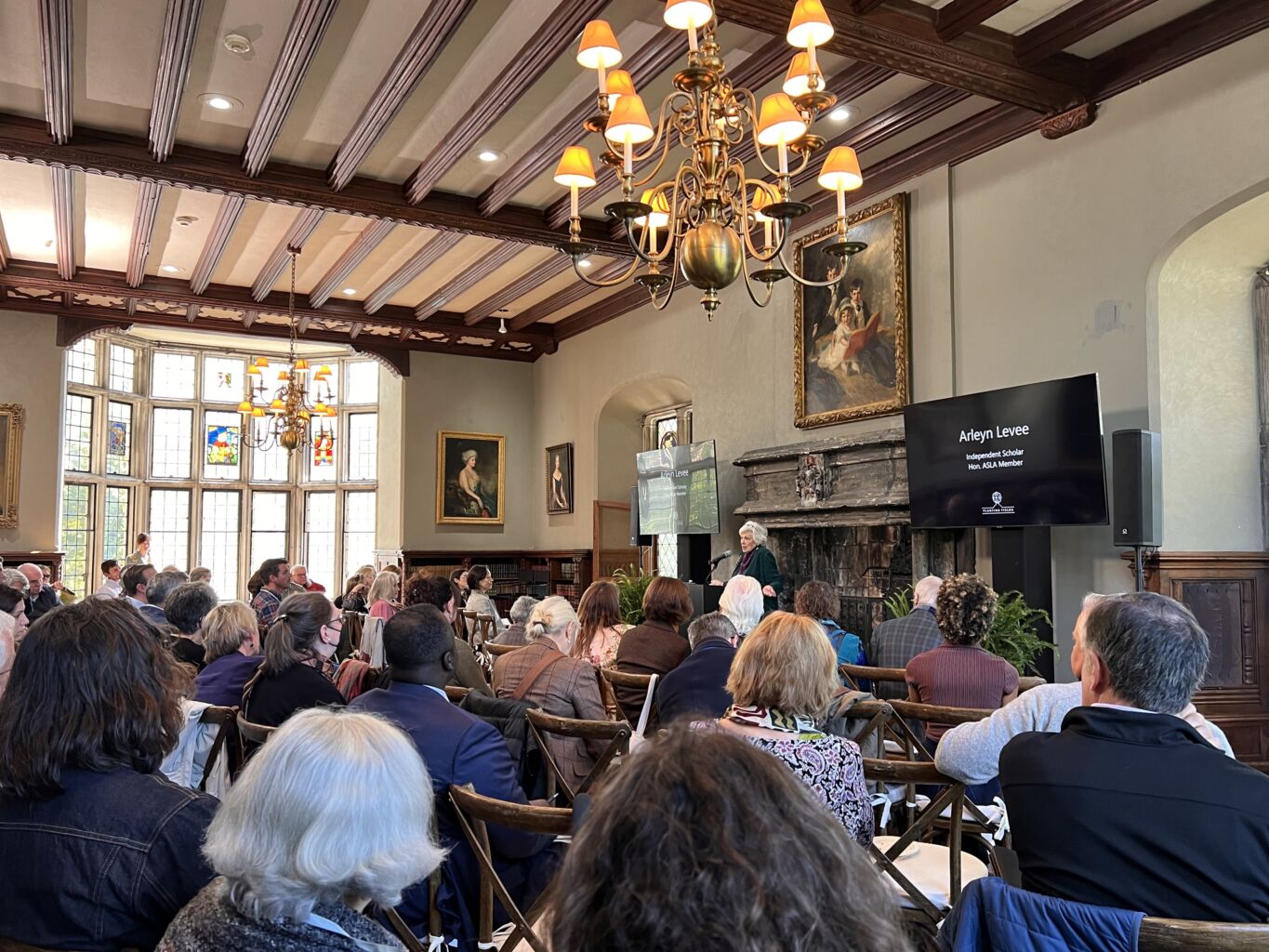To celebrate Olmsted 200, a nation-wide commemoration of the bicentennial of the birth of Frederick Law Olmsted Sr., father of American Landscape Architecture, Planting Fields Foundation hosted a week of scholarship, community, and programming that celebrated the Olmsted legacy here at Planting Fields and beyond.
The festivities began with an opening reception at La Selva, a privately owned Olmsted-designed estate in Oyster Bay. Guests were able to wander the walled garden and grounds before entering the meticulously restored Italianate mansion to enjoy the Keynote address by John Dixon Hunt, Professor Emeritus of Landscape Architecture at University of Pennsylvania, an expert on garden history and theory who has studied various cultural landscapes in Europe.

John Dixon Hunt giving his Keynote address, On the Making of Place
We then kicked off the two-day symposium, Situating the Residential Projects of the Olmsted Firm, here at Coe Hall. The symposium featured speakers from all over the country, including the East Coast, Midwest, and Pacific Northwest. Presentation topics ranged from examining Frederick Law Olmsted’s travels through the American South, to the Olmsted Brothers firm’s work here on Long Island, coming all the way up to present day as we examined how Olmsted-designed sites continue to evolve in the 21st century. Planting Fields is honored to have hosted such a wonderful gathering of leading minds in the field of Olmsted scholarship. If you were unable to attend the symposium, we encourage you to view the recorded proceedings here.

Symposium attendees enjoying lunch in the Cloister Garden
Planting Fields Foundation was also proud to uphold Olmsted’s philosophy of Parks for All People by facilitating access to 15 different Olmsted-designed sites on Long Island. In partnership with The Cultural Landscape Foundation, we organized a weekend of tours of a variety of landscapes led by local site experts. Tour sites include public parks as well as unprecedented access to privately owned Olmsted sites including cemeteries, seminaries, waterfront estates, and other unique sites that are not usually accessible to the public. The weekend culminated in the release of the What’s Out There: Olmsted on Long Island Guidebook, which includes brand new photography and information on a dozen Olmsted-designed sites included in the tours.

Portrait of Frederick Law Olmsted by John Singer Sargent
Frederick Law Olmsted was a staunch believer in the positive impact of nature on our physical and mental wellbeing. As comprehensive as these events were, they were only the starting point for a larger discussion of the need for universal access to parks and open green spaces – and their ongoing stewardship – in all American communities, especially those currently underserved. Planting Fields is so glad to have had the opportunity to lead efforts to create greater awareness and celebration of the collective heritage of Olmsted on Long Island. It is our hope that the interest in Olmsted’s designs and values continues beyond these events and inspires us all to be responsible stewards of our shared landscapes and natural resources.
Emily Leger, Curatorial Assistant
Planting Fields Foundation’s Olmsted 200 events were all made possible through generous grant funding provided by the Robert David Lion Gardiner Foundation.


